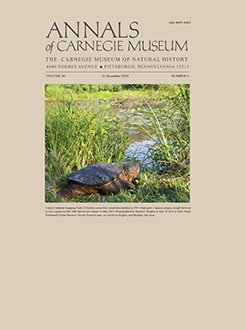Multi-year studies of syntopic species provide a spatiotemporal framework for comparing their demographic responses to the same environmental conditions. We used data derived from 15 years of sampling at an artificial pond matrix in southwestern Pennsylvania to investigate the survival, growth, and ages of Midland Painted Turtles (Chrysemys picta marginata) and Common Snapping Turtles (Chelydra serpentina serpentina). We trapped turtles with baited hoop-nets at a primary wetland, which was the largest and deepest of five artificial ponds in a spatially aggregated matrix at the Powdermill Nature Reserve, a protected site in the Allegheny Mountains. We captured 81 Midland Painted Turtles 162 times, and 43 Common Snapping Turtles 136 times. For both species, apparent survival probabilities were higher for adults (range 79–95%) compared to juveniles (range 57–82%), and higher in females compared to males or juveniles. The average growth rate was highest in juvenile turtles of both species, indicating growth was maximal during periods of the lowest survival. Average growth rates, in general, were slower for Midland Painted Turtles compared to Common Snapping Turtles. Relating body size to age revealed estimates conforming to studies elsewhere and to longevity records based on known-age turtles. We interpret findings at this wetland matrix to represent the demographics of a deme within a fluid and dynamic regional network of demes for these two species and highlight the value of artificial pond networks to the conservation of freshwater turtle metapopulations in Pennsylvania.
How to translate text using browser tools
31 December 2020
Demography of Aquatic Turtles (Chrysemys picta marginata and Chelydra serpentina serpentina) in Southwestern Pennsylvania
Daniel F. Hughes,
Walter E. Meshaka Jr.
ACCESS THE FULL ARTICLE

Annals of Carnegie Museum
Vol. 86 • No. 4
December 2020
Vol. 86 • No. 4
December 2020
Artificial ponds
conservation
demography
ecology
growth
survival




